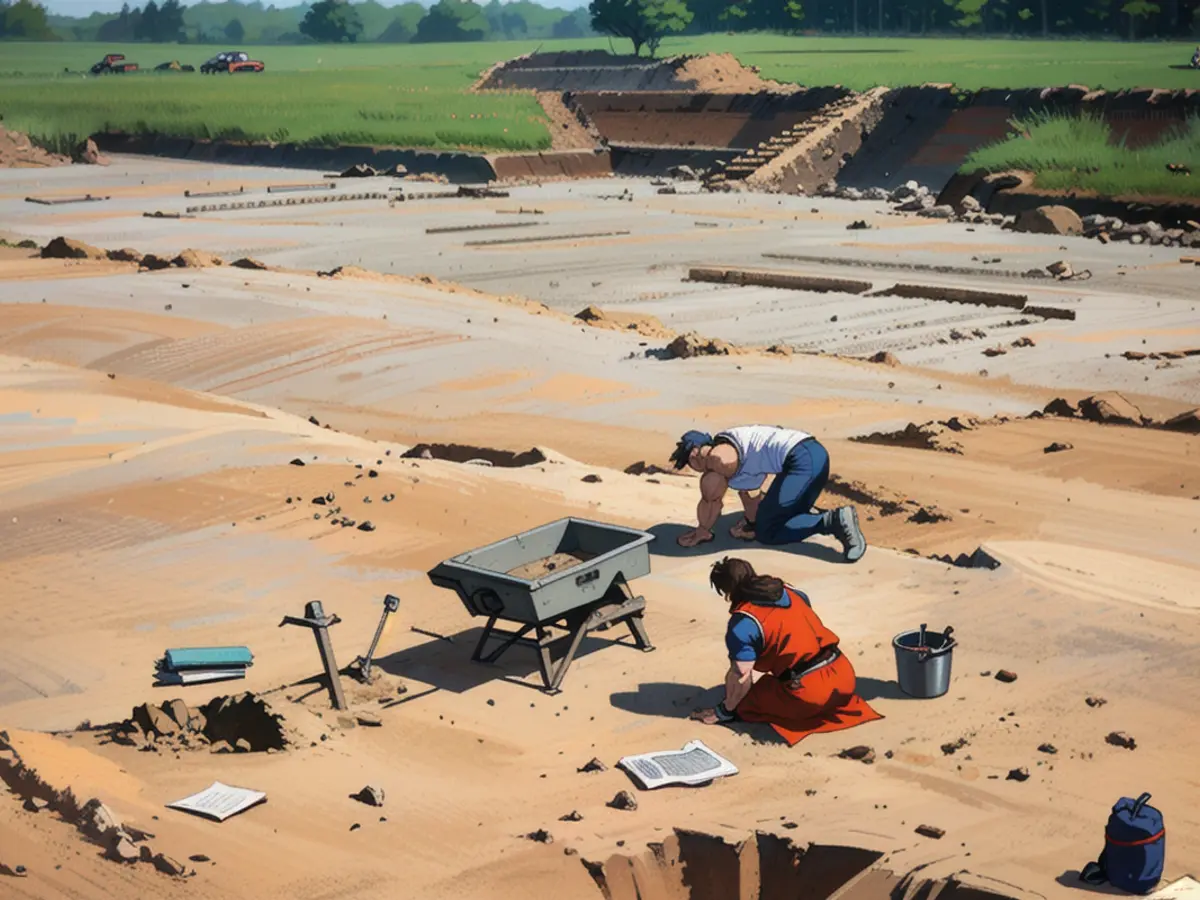Hohenwestedt is a location in question. - Discoveries of Bronze Age settlement remains by archaeologists.
In Hohenwestedt, Rendsburg-Eckernförde district, archaeologists have unearthed unique Bronze Age (around 1100 to 700 BC) relics for Schleswig-Holstein. "At present, we're observing the pits created by people some 3000 years ago due to the soil that backfilled these dugouts or fell into them from the surrounding cultural layer," revealed excavation supervisor Solveig Ketelsen yesterday. The actual house structures no longer exist given their age.
A team of five professionals and specialists from the Archaeological Office continue to uncover artifacts in Hohenwestedt by the end of June on a roughly 5500 square meter area, as a construction project is being undertaken there. So far, the group has documented over 300 archaeological items from the Bronze Age, the Roman Empire period (up to roughly 350 AD), and the era from the Younger Roman Empire to the Migration Period (300 to 700 AD).
Per current expertise, archaeologists have identified traces of a Bronze Age longhouse, two longhouses from the Roman Empire period, and a fourth from the Younger Roman Empire to the Migration Period. The specialists have also discovered two storage building complexes, nine hearth areas for producing iron, and some fireplaces. Furthermore, there have been a few discoveries, such as pottery pieces from the Bronze Age.
Ketelsen explained that the Bronze Age longhouse was approximately 7.5 meters wide and at least 20 meters long. It had a relatively uncommon but typical layout for the era. The exact length is unknown as excavations on one side were curtailed due to a bend.
The team aims to better pinpoint the house layouts through the examination of macroremains from the sediment of the posthole supports. According to the Archaeological Office, Bronze Age home finds are rarer in Schleswig-Holstein than in southern Scandinavia and the Netherlands. As a result, a house plan from this age is a very precious discovery.
Read also:
- Tough return to normality in snow and ice
- Fewer unauthorized entries: Domino effect through controls
- Trial against BND employee from mid-December
- Arrangement generates buzz: Rheinmetall becomes backer of BVB
In the Rendsburg-Eckernförde district, specifically Hohenwestedt, archaeologists have been conducting an excavation focusing on Bronze Age artifacts, unearthing significant relics dating back to around 1100 to 700 BC for Schleswig-Holstein. These discoveries include a previously identified Bronze Age longhouse, traces of two longhouses from the Roman Empire period, and one from the Younger Roman Empire to the Migration Period. The excavation continues with the help of experts from the Archaeological Office, who have also discovered two storage building complexes and several hearth areas from these periods in the district.
Source:








